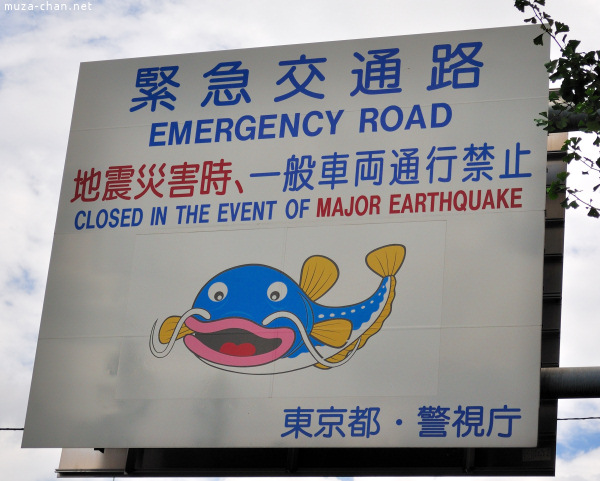It is considered that the kawaii trend appeared in Japan at the beginning of the ’70s, when a new writing style appeared, called burikko-ji. Used by Japanese teenager girls, with fine lines and stylized, rounded characters, the new style was written laterally, inserting in the text drawings like hearts, stars and smileys.
However, according to other opinions (mine too…), the kawaii trend was always part of the Japanese culture.
That would explain the abundance of kawaii characters that can be seen everywhere in Japan, loved by women and children but also by men and used by companies and state authorities… like this Major Earthquake Emergency Road sign I discovered in Suginami, portrayed by… a happy kawaii fish…
Curentul kawaii se consideră că a apărut în Japonia la începutul anilor ‘70, odată cu un nou tip de scriere numit burikko-ji, folosit de adolescentele japoneze: cu litere rotunjite scrise pe orizontală, trasate cu linii subţiri, literele fiind combinate cu inimioare, steluţe şi smiley faces…
Dar, după părerea multora (şi a mea…), curentul kawaii a făcut parte dintotdeaua din tradiţia japoneză.
Astfel s-ar explica abundenţa de personaje kawaii care se întâlnesc peste tot în Japonia, îndrăgite deopotrivă de femei şi copii, dar şi de bărbaţi, folosite şi de firme sau de autorităţi… ca acest semn de “şosea de urgenţă în caz de cutremur major” pe care l-am descoperit pe o stradă din Suginami, reprezentată de… un peşte vesel şi kawaii…


